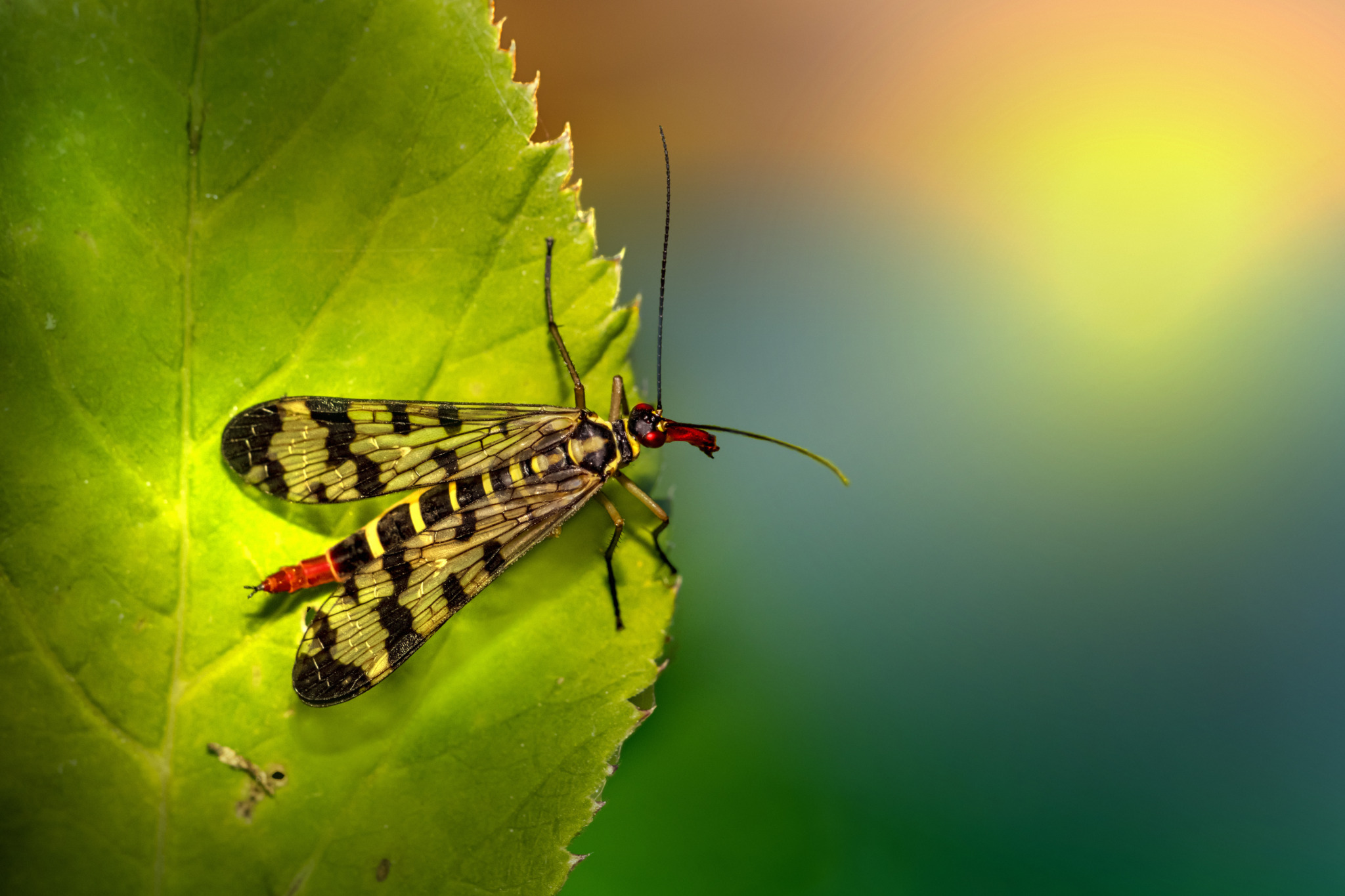The Scorpion Fly (Panorpa communis) is an interesting insect belonging to the family Panorpidae. Here’s some information about this unique creature:
- Appearance: Scorpion flies are relatively small insects, typically ranging from 15 to 25 millimeters in length. They have a distinctive appearance characterized by a long, beak-like rostrum (snout) and a pair of enlarged, scorpion-like genital structures at the tip of the abdomen in males. Despite their name, these structures are not venomous and are used in mating rituals. The body is typically brown or black, with transparent wings and sometimes patterned markings.
- Habitat: Scorpion flies are commonly found in various habitats, including woodlands, meadows, grasslands, and gardens. They prefer areas with abundant vegetation and moist conditions, such as near streams or damp leaf litter.
- Lifecycle: Scorpion flies undergo incomplete metamorphosis, with three life stages: egg, nymph, and adult. Female scorpion flies lay eggs in soil or decaying organic matter, where the nymphs hatch and develop. Nymphs resemble miniature versions of adults but lack wings and reproductive structures. They undergo several molts before reaching adulthood.
- Diet: Adult scorpion flies are primarily scavengers and feed on a variety of organic matter, including dead insects, plant material, and decaying organic matter. They also consume nectar from flowers and may act as pollinators.
- Reproduction: Mating in scorpion flies involves elaborate courtship rituals, often initiated by males displaying their scorpion-like genital structures to females. Once a female is receptive, mating occurs, and females lay eggs in suitable locations for nymph development.
- Predators and Defense: Scorpion flies are preyed upon by various predators, including birds, spiders, and other insects. Their cryptic coloration and ability to fly help them evade predators. Additionally, the scorpion-like genital structures in males may serve as a form of mimicry, deterring predators or confusing potential threats.
- Distribution: Scorpion flies are found in various regions across the Northern Hemisphere, including Europe, Asia, and North America. They are relatively common in suitable habitats but may not be frequently encountered due to their small size and secretive habits.
Overall, the Scorpion Fly is a fascinating insect with unique morphology and behaviors. Despite its somewhat intimidating appearance, it poses no threat to humans and serves important ecological roles as scavengers and potential pollinators.
Visited 197 times, 24 visit(s) today
Views: 367
Subscribe to the newsletter:
